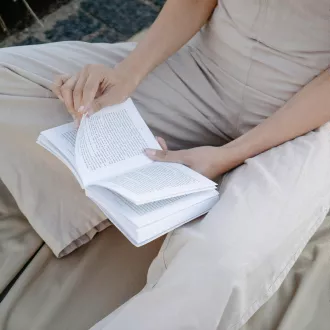Transcription The sketch, starting point
Although every day computer programs are able to offer decorators better resources for the graphic representation of their projects, sketches and sketches continue to be very useful tools, especially in the early stages of the decorative process.
Mastering the art of representing objects using only a pencil and paper allows the decorator to capture an idea in a clear and quick way that can be confronted with the client, to review it and if necessary modify it, until it is accepted. Then, it must be transferred to a digital format to be re-evaluated by all interested parties.
On the other hand, the freehand representation of interiors requires the mental abstraction of the decorator, which favors the development of new ideas. In addition, it allows him to discover and solve technical or aesthetic problems not considered until then.
What are the sketch and the sketch?
The sketch is the first representation of the general shape of a room and the distribution of furniture and other decorative elements inside it, in order to provide a general idea of the project. It is made freehand and does not include dimensions or other annotations, although sometimes it may include some clarifications, such as general dimensions and materials to be used.
The sketch is the next stage after the sketch. Although it is also done freehand, the sketch requires a more careful proportionality, since it must include the general and specific dimensions of each of the rooms as well as the distribution of doors, windows, furniture and other significant decorative elements. The sketch should include as much data as possible, so additional views are made to help clarify even the smallest details of the decorative project (materials, colors, textures, etc.).
Recommendations for freehand drawing
Freehand drawing is the drawing made using only a pencil, mechanical pencil or ballpoint pen and a sheet of paper. The improvement of the quality of freehand drawings is achieved through daily practice and the implementation of the following recommendations:
- Using a notebook, pad or notebook with preferably gridded sheets and a cover or hard cover will allow you among other things: that the sheets rest on a smooth surface so that the strokes are more stable and that the grids serve as a reference to make the strokes with higher quality and maintain the proportions of the objects represented.
In addition, filing all your projects in a notebook avoids the loss of loose sheets and allows you to review the notes whenever you want to study, correct or improve them.
- The pencil or mechanical pencil should have a medium (HB) or soft (B) lead, this will allow you to draw all the initial lines without exerting pressure on the sheet; and at the end, to reinforce only the necessary lines.
Pencils and leads of medium hardness have the symbol HB or F, while soft leads have the symbol B, 2B, 3B, etc.; the higher the number accompanying the B, the softer the lead and the darker the lines. Hard leads have an H instead of the B.
- The pencil is taken approximately 25 millimeters from the tip and the drawing of straight lines should be done in a single movement: place the pencil at the starting point and fix your eyes on the end point; practice the hand movement required for the drawing without the pencil rubbing against the sheet, then draw the line.
Do not worry too much about the quality of the stroke, it can be distracting. As we can see in the figure, the horizontal stroke A is incorrect because there are three intermediate stops that the draftsman should not have made. Page break.
The direction in which straight lines should be drawn is as follows:
- Horizontal lines are drawn from left to right (line B).
- Vertical lines are drawn from top to bottom (line C).
- Slightly inclined lines are drawn from left to right (line D).
- Very steep lines from top to bottom (line E).
Circles and ovals are drawn in a single movement in a counterclockwise direction:
- You can improve the quality of the lines by frequently performing the following exercises.
- Place a series of equally spaced points and try to draw horizontal or vertical lines between them.
- Remember to fix your eyes on the target point and do not worry too much about the line being perfect, with time you will improve it.
Freehand drawing using the framing technique
This technique consists of starting the drawing by tracing squares or cubes to insert more complex flat or volumetric figures in them.
Steps to follow to freehand draw a plane figure following the framing technique:
- Draw a square, and indicate the points where the other lines that make up the figure should be drawn.
- Then join the points with thin lines.
- Then reinforce the strokes that make up the figure.
- Finally, erase the auxiliary strokes; when these are drawn very thin and clear, it is not necessary to erase them.
Steps to follow to represent in three dimensions the previous figure:
- Draw two squares slightly offset from each other.
- Then draw lines between the vertices of both squares.
- Draw on the front square and on the back square the figure, draw lines between the vertices formed, then join the intercepts.
- Erase the auxiliary lines (only if necessary).
sketch drawing




